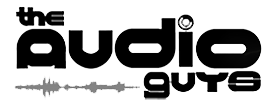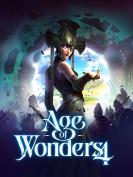Dev Journal: Creating magical sounds with The Audio Guys
By TAG , 22 Nov 2013
“After having done a fantastic job at our Overlord titles, we’re happy to announce our friends at UK-based The Audio Guys are teaming up with us again to make the sounds for Age of Wonders III.
The videos you’ve seen in the past used mostly placeholder sounds. Although some legacy sounds will remain, a lot of work needs to be done. Together with music maestro Michiel van den Bos the Audio Guys are hard at work to ensure Age of Wonders will have immersive audio-scape fitting the gameplay and game world. Here is Dan Gardner to tell us a bit about creating sound effects for Age of Wonders III.”
Can you tell about how The Audio Guys got started and your involvement with Triumph Studios?
The Audio Guys started around 8 years ago, when Tim Bartlett and I left Codemasters to set up an independent audio company. We felt that by being independent, we could provide a higher quality and more flexible audio service to many different developers, and this has proved to be correct. The fact that we are still here going strong after 8 years is testament to this.
One of our first projects was working with Triumph Studios on Overlord, which was a really great game to set the company off on the right track. Working on all the creatures, characters and magical environments in Overlord was really good fun as well as being very challenging. Getting performances for the Minions and the Minion Master characters was the most crucial aspect as they are the main stars of the show, working with Rhianna Pratchett (writer) and Marc Silk (voice actor) during the studio voice session helped to get this nailed, and we think the results speak for themselves.
Since then, aside from working on Overlord 2, we have worked on many AAA titles as well as many smaller/casual titles – Forza Motorsport 3, 4 and 5 (on the new Xbone console), Sega Rally (console and arcade machine), Spyro, Virtua Tennis, Backbreaker, Blur, Kinectimals, My Horse, Kinect Disneyland Adventures, Nascar, Sonic&Sega AllStars Racing Transformed, Surgeon Simulator, Moshi Monsters and a whole host of other mobile/casual games. See http://www.theaudioguys.co.uk/past-projects/ for the full list.
What are the challenges on making sound for a game like Age of Wonders?
Working on AoW is a particular challenge due to the massive number of units involved in the game, as well as the huge arsenal of spells and abilities that all need individual audio crafting, love and attention.
All of the effects for these need to sound interesting and as unique as possible but still have to be produced in a timely manner. The audio system was designed with this in mind. We identified the components that made up the sounds heard with each action such as footsteps, armour movement, magic type, creature type and so on. We broke these sounds down into component parts and then created them to be mixed back together in-game. By using this almost modular approach it allowed us to create a vast range of sounds that result in a dynamic, interesting and non repetitive soundscape.
The AoW3 project is a bit different from previous (action) titles we have worked on as the gameplay turn based, which means the focus is on only a small handful of units triggering sounds at any given time as opposed to realtime games where there are potentially 100’s of units making sound which is a challenge in itself in terms of managing the mix, cpu and memory overheads. Because of the turn based nature of gameplay with small numbers of units interacting, we can focus much more on the sounds themselves and get the quality level as high as possible.
So how do you go about making these different sound effects?
At the most basic level the process of making sounds is to ensure that they meet gameplay requirements and player expectations for that sound: everyone has a good idea what a windy hill top or a soldier marching in armour should sound like. And audio provides important cues and feedback about what’s going on gameplay wise and the actions that the player is undertaking.
At a deeper level we aim to make sure the sounds are unique, interesting and where possible filled with character. A lot this is down to the individual sound designer’s creative skills and processes, as well as their experience. Practically this means using a variety of sources including sound effects libraries – these are massive collections of sounds that different sound recordists have made over the years.
Good sound designers won’t simply take these sounds as they stand from the library though, especially as a lot of the sounds get reused by a huge amount of films and games – so we mix different components together and where possible use your own recordings. If we work hard enough we end up creating something that sounds unique and filled with character, and hopefully some of our own creative flare and personality in there too.
When designing the more abstract type sounds this usually involves using synthesizers (both hardware and software) as well as using sounds completely out of context. It’s important to know how to use your tools well and stay focused. This is particularly important on AoW3 as the audio direction can be very specific and there needs to be the right balance of reality and fantasy, if you go too crazy with the more synthetic qualities it will start to sound at odds with the rest of the game world. It’s almost like the audio has to have organically grown and emerged from the world we’re playing in. There is also a strong heritage from the previous 2 AOW titles that we must be mindful of, with various original AOW legacy sounds making their way into some of the audio source components, just so that we can try to retain some elements of the original titles, but while also trying to give everything a new audio twist.
As the world is filled with creatures and humanoids, emotes play a big part of the soundscape. When recording the humanoid emotes it was important to make sure they’re full of character and well directed even though they are quite short incidental sounds compared to more scripted voice work. Humans are fairly straightforward, you need a pain reaction, you just imagine being smacked in the stomach with a big axe or a sword, and pretend to have the wind (and your guts) knocked out of you!
For the other races you do the same kind of thing but get into character more. For Orcs we imagined what it would be like to have a large wide jaw, with big fangs and the kind of guttural sounds they would make, Goblins are small, impish more mischievous and maybe a bit crazy. So they’re much more high pitched and chatter-like. The draconians being a lizard like race are much growlier and hiss like. The artists performing the emotes really need to have conviction in their performance and really ‘let go’ if the emotes are to sound convincing.
Another big part of creating unique and interesting sounds is to always remain acutely aware of the big impact that volume levels and timing, of the individual sound elements, will have on the overall sound, and being prepared to change and play with these to try and uncover more interesting and unique combinations of sound. Also, you must be able to throw the whole sound away and start again when it isn’t working, even after maybe spending hours on getting to that point. It can be hard to do, but that is what is required sometimes.
But of course, the most important element of all in this is being able to effectively hone in on what the development team requires for the sound, as they will have been building this world / character / product for far longer than you and they will usually have very clear ideas on how they think it should sound, they should always be the first port of call to get your sound design work started.
Can you tell something about the middleware you are using?
For Age of Wonders 3 we have been using FMOD Designer to implement the game audio. FMOD is one of the industry standards when it comes to audio middleware solutions and something we’re very familiar with.
The great thing about FMOD is it allows you to set up and specify all the kinds of abstract data you need in order control game sounds from when they’re meant to trigger, playing variations of a sound (so things sound more natural), the overall mix and DSP properties (Digital Signal Processing) to add reverb, muffling of sounds with distance, and so on.
Ultimately this is very empowering to the audio designers because it gives you far greater control over the overall audio experience, allowing you to concentrate on the more creative aspects of game audio production.
Although we’ve not played many turn based strategy games we’re big fans of the fantasy genre and the kinds of worlds you can find in that genre, whether it’s MMO’s like World of Warcraft (or Everquest 2), single player epics like Skyrim or jaunts such as the Fable series of games, there’s something that really pulls at our hearts as gamers when creating sounds for these kinds of fantasy worlds, almost an earthy familiarity that we yearn to recreate. Living in the UK we have some lovely oak forests, mountains and plenty of castles, so that kind of old world feeling is ever lurking in the background, helping to inspire us.
This meant that when it came to creating the audio for titles like AOW3 (and Overlord) it was one of those rare opportunities where we could combine our love of audio with our love of the fantasy genre. There should be more audio updates soon as we refine and develop more of the sound systems in the game. Hopefully everyone will enjoy the efforts we are putting in.















